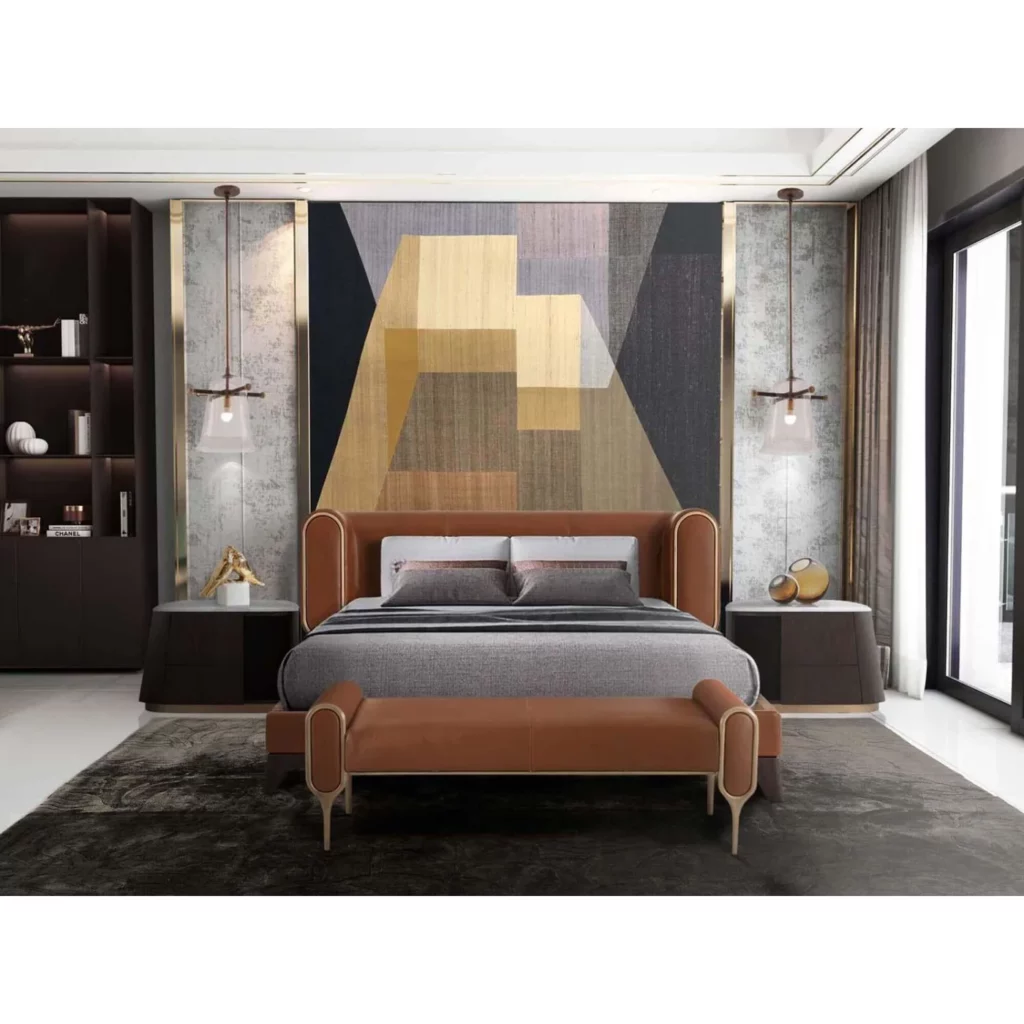
Do Bedside Tables Need to Match Your Bed?
What is in this article?
ToggleDo bedside tables need to match your bed? The answer is no, they don’t have to! Whether you match or mismatch, the key is creating a space that reflects your style and makes you feel comfortable.
The best design suits your taste and lifestyle, so don’t be afraid to break the rules and have a bit of fun with your décor!
Let’s examine the details and decide whether you should stick to the idea of matching modern furniture or embrace a more eclectic style!
we all know the query is the first thing that comes to our mind when we talk anything about change that is
Are Bedside Tables necessary?
Bedside tables, while not absolutely necessary, are highly practical and contribute to both the functionality and aesthetics of a bedroom.
We have found that they offer essential storage and surface space for items like lamps, books, or personal items, keeping everything within arm’s reach.
This can help create a more organized, clutter-free space, which enhances the overall comfort and relaxation of the room.
From a design perspective, bedside tables balance the look of the bed and provide symmetry, especially when used in pairs. They also allow for an opportunity to add decorative elements, such as lighting, greenery, or artwork, that tie the room together.
If space is a concern, wall-mounted shelves or compact tables can still provide the same function without occupying too much room. So while not mandatory, bedside tables do enhance both the functionality and style of a bedroom.
Why Matching Bedside Tables Was the Norm
For years, matching furniture was seen as a sign of a well-designed home. If you had a wooden bed, you were expected to have matching wooden modern bedside tables, and so on. This approach made sense in an era where everything was about symmetry and uniformity. Matching sets were convenient, easy to buy, and created a cohesive look without much effort.
But times have changed, and so have design trends.
The Rise of Eclectic Design
Nowadays, the trend is all about personalisation and individuality. The rules are more relaxed, and mixing styles, colours, and materials are not only accepted but celebrated!
The eclectic design has taken the world by storm, allowing you to express your unique taste without being confined to rigid design rules.
Why Mismatched Can Be Marvellous
Here’s the thing—mismatched bedside tables can enhance your bedroom’s aesthetic. They bring a dynamic, lived-in feel to the space, making it look less like a showroom and more like a personal haven.
Here’s why going mismatched can be a great idea:
- Personality: Mixing different styles can showcase your personality and creativity. Maybe you have one table that’s a vintage find and another that’s sleek and modern—each piece tells a story.
- Flexibility: With mismatched tables, you have the freedom to switch up your décor whenever you like. You’re not tied down to a specific style or colour palette, giving you the freedom to evolve your space over time.
- Focus: Mismatched tables can create focal points in your room. For example, a bold, colourful table can stand out against a more neutral bed, drawing the eye and adding interest.

How to Mix and Match Bedside Tables Successfully
While mismatched bedside tables are stylish, it’s important to maintain a balance between eclectic and chaotic design. Here are some tips to ensure your bedroom remains cohesive and chic:
1. Stick to a Colour Palette
Even if your bedside tables don’t match in style or material, keeping them within the same colour palette can create harmony. For instance, if your bed is white, you might choose tables in different shades of grey or blue.
2. Play with Proportions
It’s okay if your tables aren’t identical in size or shape, but they should complement each other. For example, pairing a taller table with a lower one can add visual interest, but make sure they’re balanced. You don’t want one table to dwarf the other.
3. Consider Functionality
Remember, your bedside tables serve a purpose beyond aesthetics. Think about what you need from them—whether it’s storage, surface area, or something else—and choose accordingly. You might have one table with drawers for extra storage and another with a sleek surface for displaying décor.
4. Use Accessories to Tie It All Together
Accessories like lamps, books, or decorative items can help bridge the gap between mismatched tables. A pair of matching lamps, for example, can create a sense of symmetry, even if the tables themselves are different.
When Matching Makes Sense
While mismatched tables can be trendy and stylish, matching tables are still a safe and classic choice. They work particularly well in certain scenarios:
- Minimalist Décor: If your bedroom design is all about simplicity and minimalism, matching tables can enhance the clean, uncluttered look.
- Small Spaces: In smaller bedrooms, matching tables can create a sense of order and make the space feel more cohesive.
- Traditional Style: If you prefer a more traditional or formal style, matching tables can complement the overall aesthetic.
Whether you go for a perfectly matching set or decide to mix things up, your bedroom should be a reflection of you.
After all, it’s your space—make it uniquely yours!
Also Read –
